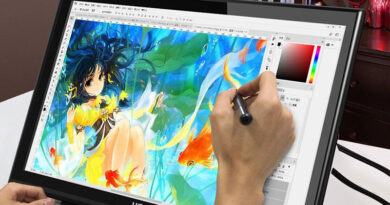From Video-Skip VCRs to DVR: The Technology of Viewing Entertainment
Television technology has come a long way from its basic originations back in the late 1800s.
In 1939 the first black and white television screen broadcast its first signals. In 1956, the video cassette recorder (VCR) was invented. Today, we have DVRs in multiple rooms with our triple play packages and television that can be watched on the go with a smartphone, laptop or tablet. It has never been easier to watch the shows and sports that you enjoy exactly at the moment that you want to see it.

The VCR
When the VCR hit the scene in the 1950s, television executives initially panicked. They didn’t know if viewers would stop tuning in to live television and simply rely on their VCRs to record content that they could watch at any time while skipping right through all of the commercials. This did not happen. People still tuned in to live television for sporting events, news broadcasts and other time sensitive programming.
Constantly rewinding cassette tapes wasn’t as appealing to the masses as television executives had initially feared. It actually took a couple of decades for the VCR to gain traction. Eventually, in the late 1970s and early 1980s, both the VCR and live television channels thrived and actually helped one another co-exist. VCRs certainly changed the landscape of electronics stores. Prior to the VCR, there was no such thing as a video store, and when you consider that just a few years ago there was a video store on nearly every street corner in the United States, you can see what a big impact the VCR had!
VCRs function through an intricate mechanical system involving the loading and ejection of tapes with the help of Mylar tape, spring loaded locks and read / record heads mounted on drums. There’s a lot going inside of those small VCR boxes. That’s partially why so many malfunctioned over the years. Today, they have been predominantly replaced by digital video recorder (DVR) technology.
The DVR
Today’s DVR technology is quite advanced. DVRs record live television but instead of storing the footage on cassette tapes, they store it digitally, within the DVR box’s internal hard drive. This allows for much more footage to be stored and it can be retrieved at any moment that the viewer would like access.
The DVR receives the television signal by way of its built-in tuner. Aside from merely playing back footage from a live television show, DVRs also empower viewers to pause the footage for an extended period of time and rewind / fast forward through content at incredible rates of speed. Viewers can also record different programs at the same time even though they air on different channels. Some DVR systems even allow the viewer to watch a third station while the other two channels are being recorded. Several manufacturers have different DVR types on the market, including TiVo, Motorola, RCA and Scientific Atlanta.
The technology works so well that some of the fears that television executives had about the VCR overtaking live television viewership have started to come true (to a certain extent). Nielsen reports that the percentage of live content we watch today has dropped to 85%, from 89% in 2006. That’s number is higher than many might think.
Other Ways to Watch
Today, television “on the go” is also becoming very popular. This technology allows subscribers to view live or recorded programming on mobile devices, away from the home. Popular television channels can be streamed right into laptops, tablets and smartphones.
Some systems even allow subscribers to control their televisions through their smartphones while on they are “on the go”. It is clear that mobile television options combined with the flexibility of DVR recordings have significantly altered the television watching experience.



